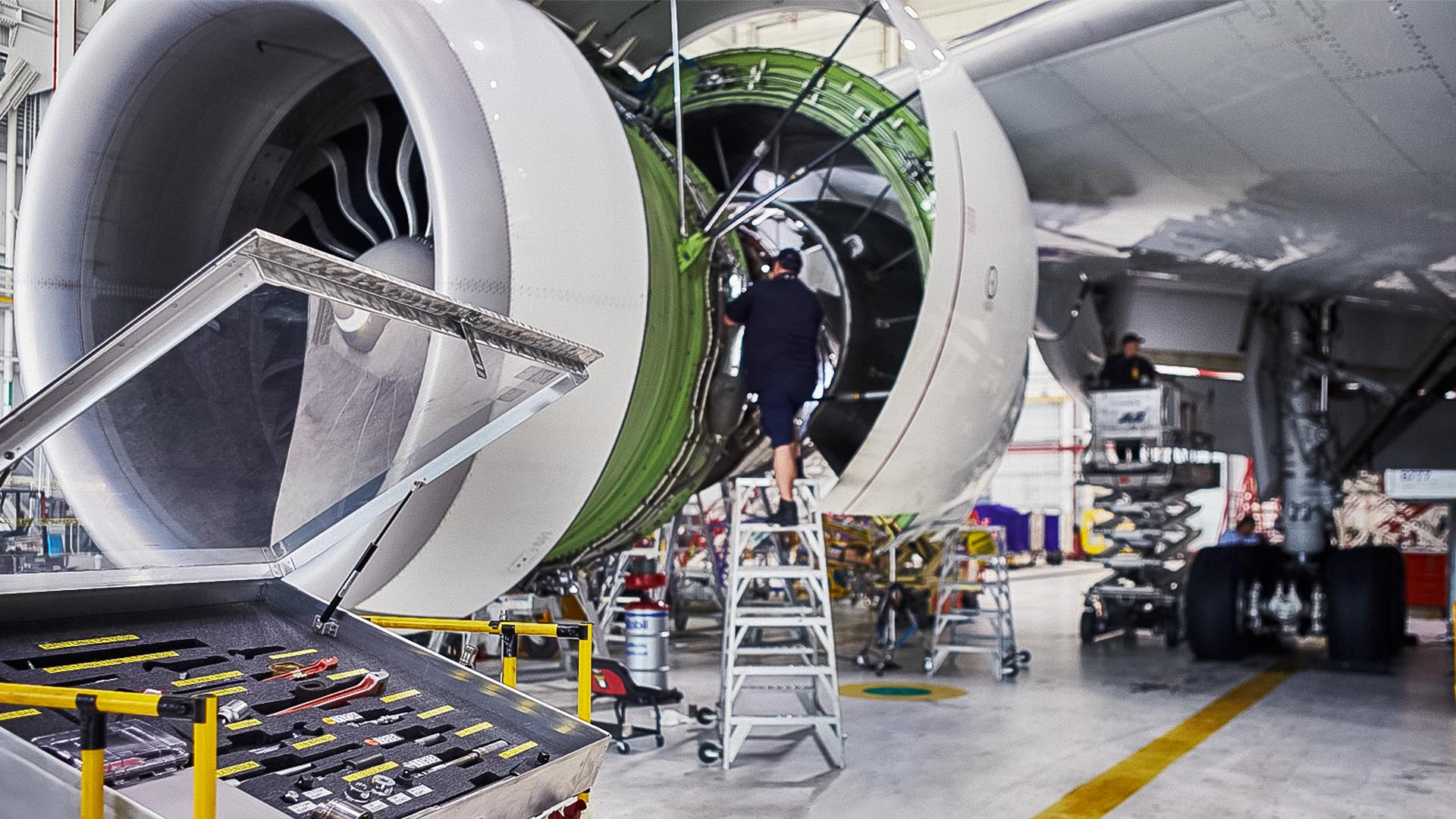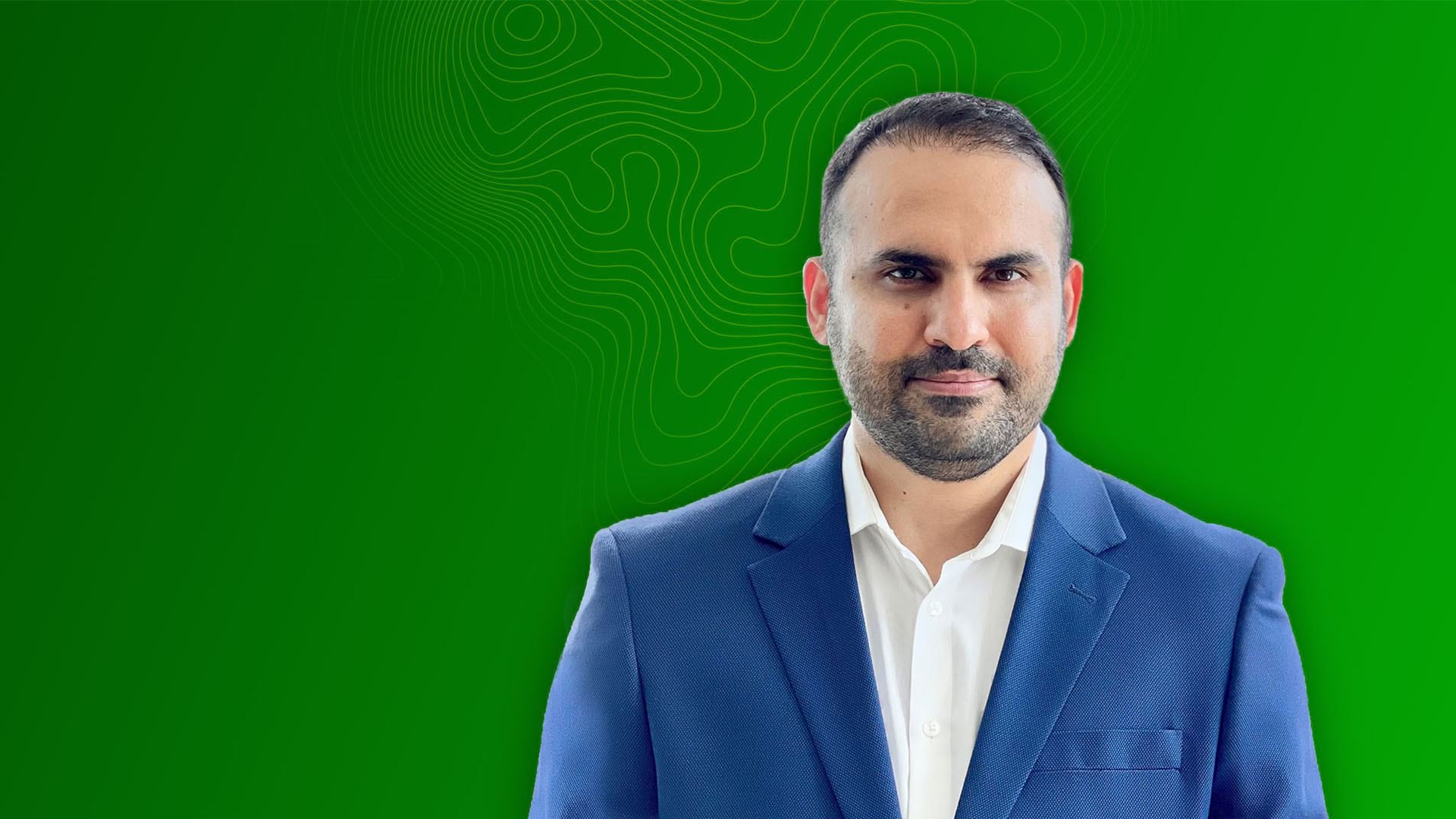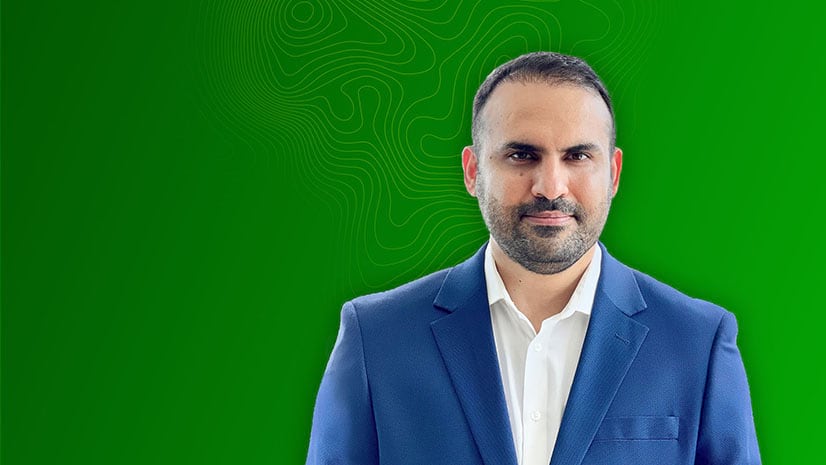Everything Kwaku Baa had studied—advanced math at a Ghanaian boarding school, engineering in Russia, computer programming and statistics in Toronto—should have prepared him for the project that landed on his desk that day.
He was a young programmer in the shipping department at Nortel, then one of Canada’s most valuable companies and a standout in the 1990s tech boom. Baa’s manager asked for a software program that would track shipments of Nortel’s telecom equipment to customers worldwide.
Baa hesitated.
“I could write whatever code you asked me,” he says now, “but I realized to be a good programmer, you have to understand . . . the different components of the businesses, how they all interact.”
So Baa, who loved the vocabulary of calculus and the elegance of computer languages, enrolled in an MBA program to study the language of business. What he learned was more than linguistics—it was an understanding of where value lies in a company, and how his work could expand across an enterprise.
Applying New Skills to Business Outcomes
Several years later in 2007, Baa was working full-time and studying for yet another degree—a master’s in IT management at Carnegie Mellon—when he took an introductory class in geographic information system (GIS) software. As the professor described the technology’s capabilities, Baa’s business sense began to tingle.
“I could see how GIS actually plays a huge part in what I was doing,” he remembers.
At the time, he was working for a transportation company, mapping sales territories across the country. The data that determined where one manager’s territory ended and another’s began hinged on a matrix of calculations involving drive times, competitor locations, fuel costs, and more. The team spent six months each year analyzing and structuring the territories.
Sensing an opportunity to improve the process and the bottom line, Baa began to experiment with GIS. Using the data science embedded in the software, he automated the analysis and mapping of sales territories. Soon, a six-month process had shrunk to barely 24 hours.
“We could just create scenarios in a day,” Baa says of the GIS-based program. “It’s all in bits and bytes, so you can just look at it and see whether you want it or not.” If the management team didn’t agree with a proposed map, “you send it back to my desk and I come up with a new solution.”
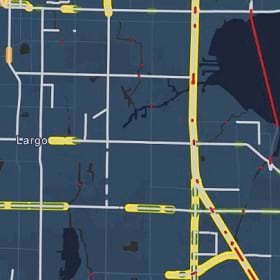
We're always on the lookout for new things… And I see GIS as a new frontier for a lot of companies.
Analytics across the Enterprise
Hal Monty has worked with some of the sharpest minds in the business world—from fellow Six Sigma Master Black Belts at GE Aviation to investment managers in private equity—and he knows the rarity of someone like Kwaku Baa.
Baa and Monty have worked together for the last decade at Penske Truck Leasing—Monty as a consultant for market strategy and Baa as the company’s director for customer experience and analytics. Penske leases more than 440,000 trucks—the literal engines of the economy—to commercial and retail customers in North America.
In Baa, Monty sees a passion for improving processes and wringing insight out of data. But first and foremost, he sees someone who is capable, impactful, and kind.
“I think his character shines through, and then the rest of the business acumen and stats skills just add to all of that,” Monty says.
For Baa, the best insights often emerge from a marriage of data science and the data management and analysis facilitated by GIS technology.
“I started my career in classic analytics, using advanced statistical tools to solve business problems,” he explains. “I consider GIS as a natural growth of the tools and capabilities we need to solve complex business problems that have location components.”
When the pandemic hit, Baa and Monty began using GIS analysis to show Penske executives the daily state of the business. Data-rich maps revealed areas of risk exposure as well as opportunities for business growth. Once the COVID wave receded, interest in GIS spread across the enterprise at Penske Truck Leasing, a company deeply rooted in innovation and analytics.
“Everybody who sees and hears about the GIS and what it can do wants a piece of it,” Baa says.
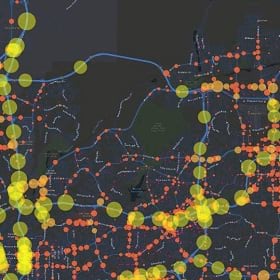
I can't even tell you any business unit within Penske right now that we are not touching.
Forget the Credit; Find the Solution
Baa grew up in Ghana, the youngest and quietest of eight siblings. He spent hours immersed in books and a small group of friends. He was driven to learn—an itch that propelled him to skip multiple grades during his K12 education and eventually earn three postgraduate degrees. Just don’t look for a string of letters after his name.
“He doesn’t need to be the guy out front getting all the credit,” says Samantha Thompson, head of customer success and fleet telematics at Penske Truck Leasing. “He’s behind the scenes on a lot of major things happening here at Penske,” she notes. “But he stands out.”
Among other projects, Baa and the analytics team use GIS to address the same challenge he solved when he first discovered the technology years ago: planning sales territories for Penske’s nearly 1,500 sites. With location intelligence from GIS, Penske optimizes its service network, spotting new areas of customer demand and ensuring that sales areas don’t overlap.
Throughout the enterprise, Baa anticipates business needs and uses GIS technology to deliver more than colleagues expect. Recently, the facilities team requested a GIS dashboard showing basic attributes of work orders for Penske’s leasing locations—information that would help them manage maintenance work on facilities. They hoped to update the data a few times a year.
Instead, Baa integrated GIS with Penske’s asset management system, ensuring that up-to-date data flowed between the systems. His team added more information to the dashboard than the facilities team requested—not only details of each building’s lighting system and driveway paving history, but its ownership and work order status, square footage, and more.
His advice to his team comes straight from his MBA days: “Let’s understand their business goals beyond what they talk about. Let’s give them something that’s integrated into some of the tools that they have.”
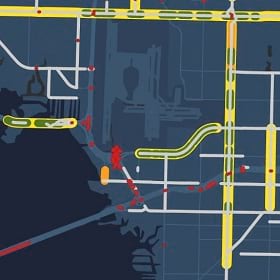
What I've seen with Kwaku is persistence and ability to read the organization, not to give up on things that he's passionate about, and that he knows is in the best interest of the company.
Location Intelligence, Analytics, and Dependability
Even as GIS spread across the Penske enterprise, Baa was surprised when members of corporate security and HR requested support. The analytics team is now working on ways in which location technology can monitor security across the company and analyze regional labor trends.
“My approach is not about selling the use of GIS,” Baa says. He knows GIS technology and location analytics will help Penske address many business challenges, “but I don’t go in saying that. It’s all about understanding what is the business outcome you want to reach . . . and what has prevented you from getting there?”
In the months ahead, he expects GIS to expand even further across the enterprise. “I see it as a way to democratize information across Penske,” he says.
That eagerness to support colleagues is a hallmark of the new business analyst, and Thompson sees it as one of Baa’s best qualities.
“He is very willing to help people,” she says, “and to help lift their work and move it forward with what he’s capable of doing.”
Monty agrees. On his list of Baa’s most admirable qualities, GIS prowess and analytical savvy run a close second to dependability.
“If he commits to you, you can pretty much take it to the bank that he’s going to follow through for you.”









